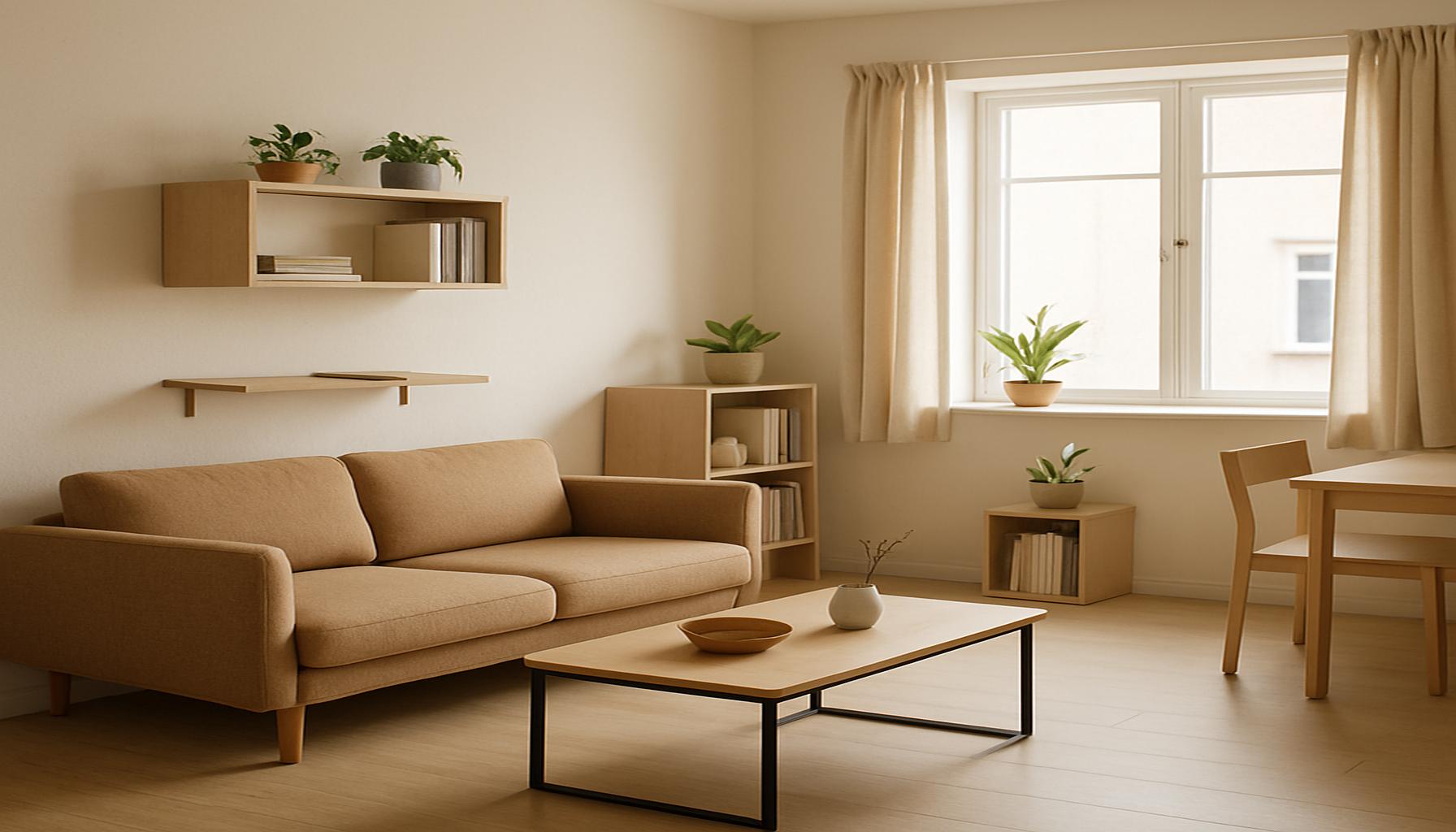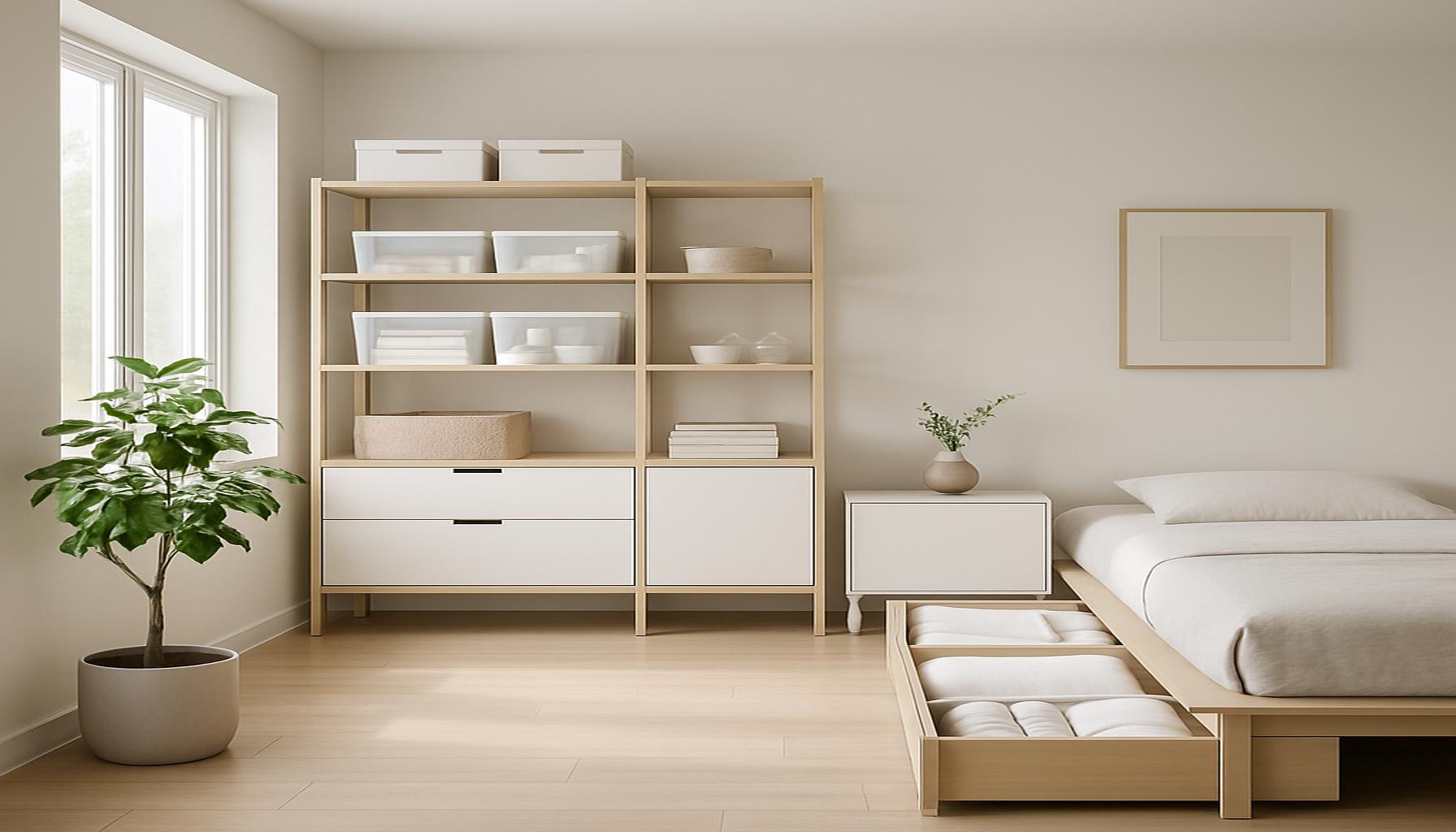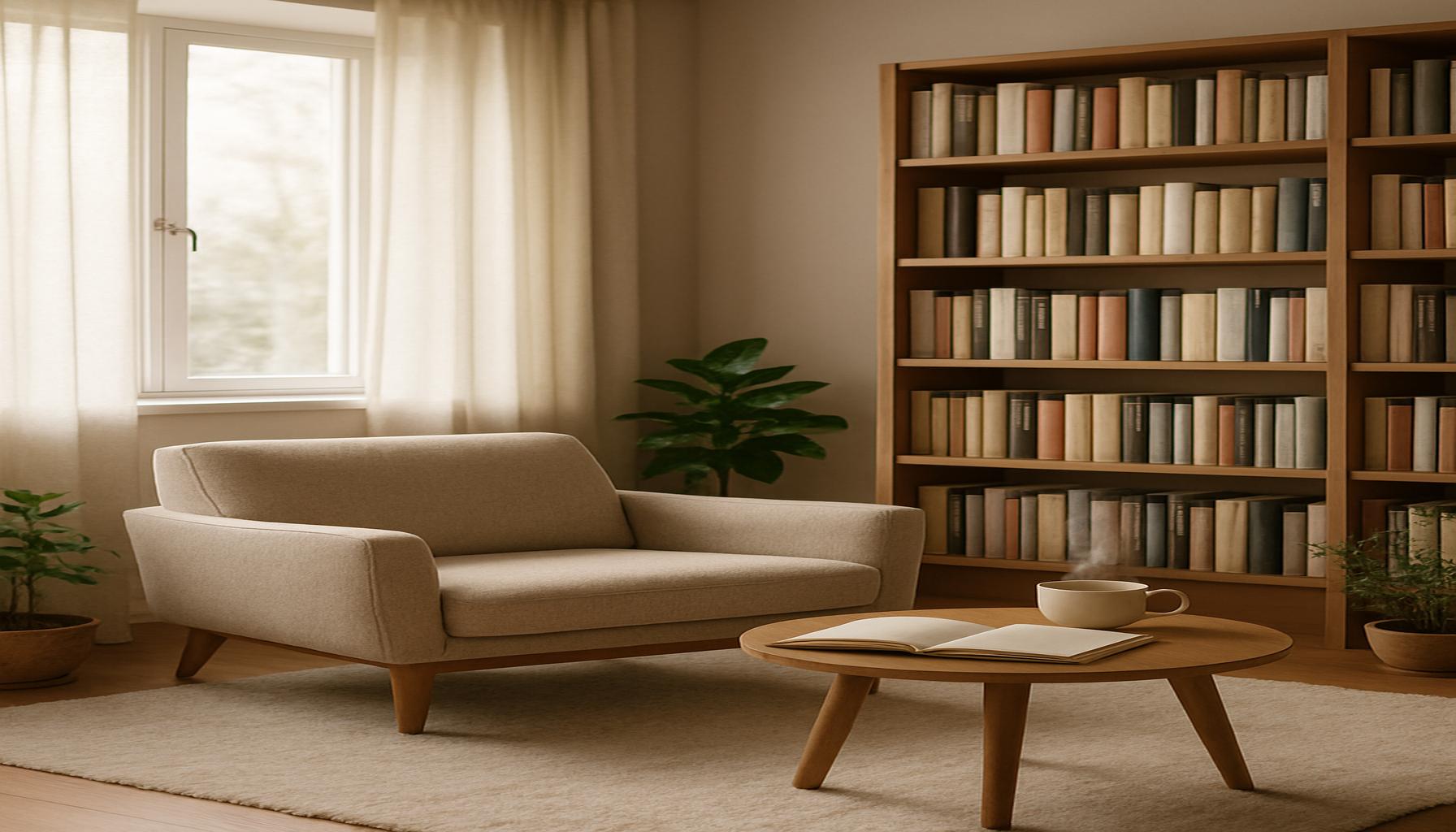Minimalism in Organizing Remote Workspaces: How to Create an Efficient and Stimulating Home Office
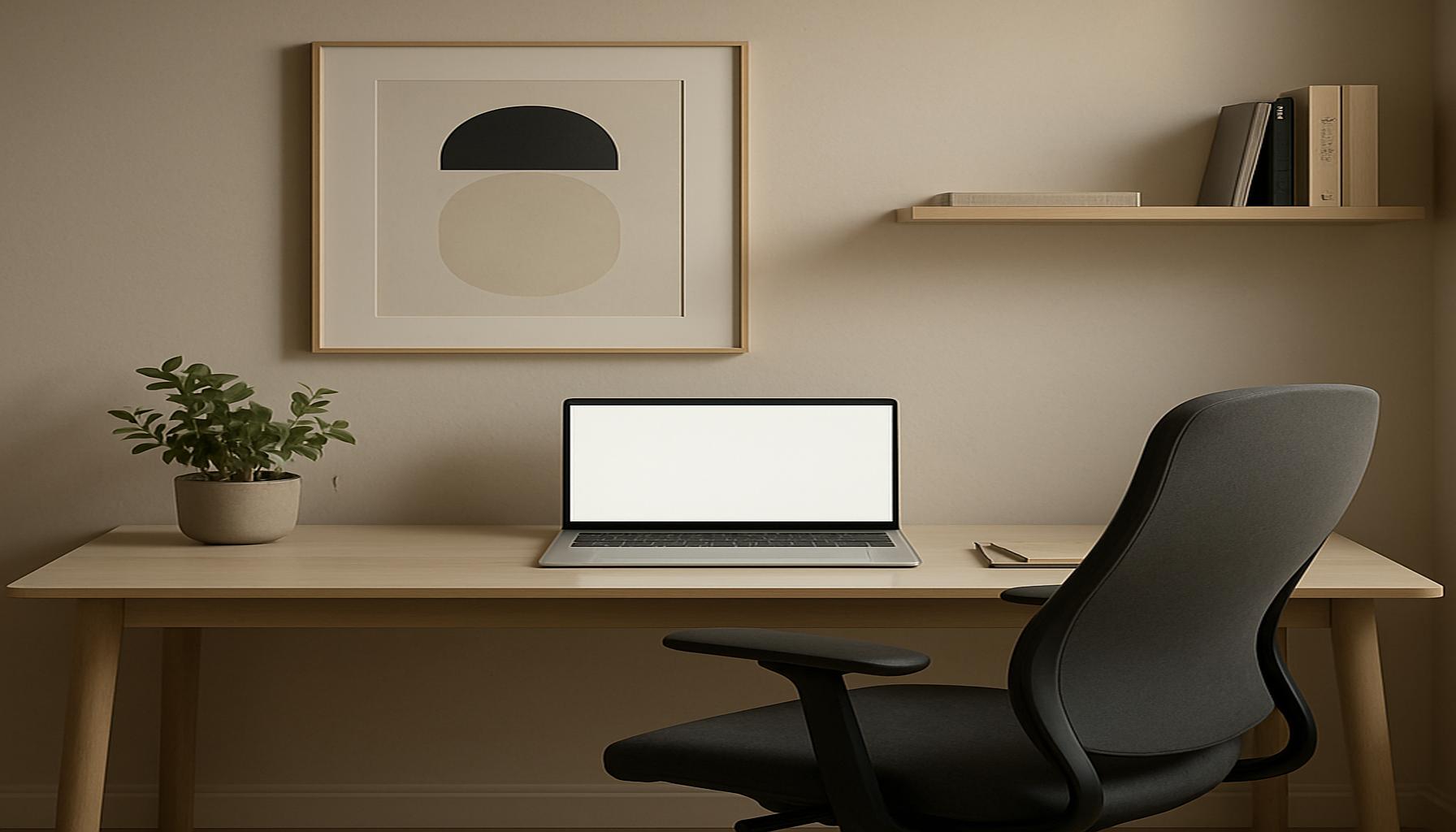
As remote work reshapes the future of employment, the need for a well-organized home workspace has become critically important. A cluttered environment often leads to distractions and can decrease productivity levels significantly. In this context, embracing minimalism may serve as a vital approach to developing an efficient and stimulating home office that not only facilitates work but enhances overall well-being.
Why Choose Minimalism?
The philosophy of minimalism in workspace design offers numerous advantages for individuals across various professions. Firstly, it promotes enhanced focus. When distractions are minimized, your ability to concentrate on tasks improves, making it easier to delve deeply into projects. This is particularly beneficial in a world where the digital noise of notifications and multitasking can fragment attention.
Secondly, minimalism is linked to increased creativity. A clean, organized environment fosters space for innovative thinking by reducing mental clutter. Studies have shown that being surrounded by fewer objects allows the mind to wander freely, which can lead to groundbreaking ideas. For example, renowned tech innovator Steve Jobs often credited his minimalist workspace for inspiring his creativity.
Moreover, minimalistic spaces are known to contribute to improved well-being. Living and working in a tidy environment can promote mental clarity, reduce stress levels, and even lead to a greater sense of satisfaction with your surroundings.
To create a minimalistic workspace, thoughtful decision-making about your environment is essential. This involves reducing clutter and only keeping what is necessary. By doing so, you can transform your office into a true sanctuary of productivity. Here are some key features to consider:
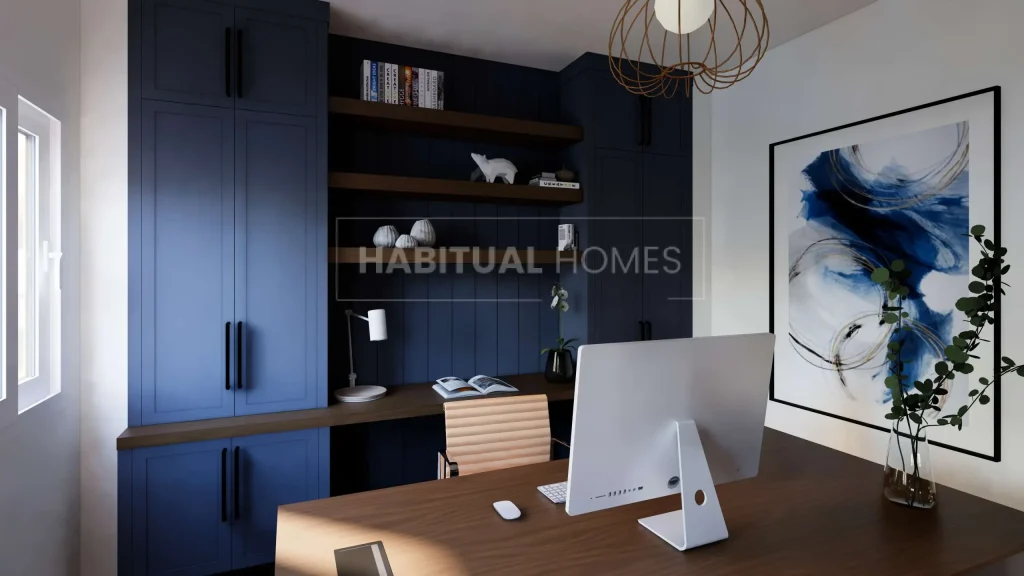
Key Features of a Minimalist Workspace
- Quality over Quantity: Focus on selecting a few high-quality tools—a reliable laptop, a comfortable chair, and an ergonomic keyboard—that genuinely enhance your work experience. This can prevent the frustration associated with low-quality products that fail to meet your needs.
- Functional Decor: When choosing decor, opt for items that serve a purpose beyond aesthetics. For instance, a stylish bookshelf can also function as a storage solution for important materials, while plants can improve air quality and add a touch of nature.
- Organized Layout: Arrange your furniture and tools in a way that promotes ease of access. Consider the flow of movement within your workspace; keeping frequently used items within reach can minimize interruptions and enhance efficiency.
In this article, we will delve deeper into practical steps you can take to create a minimalistic workspace that not only looks appealing but organically boosts your productivity. With intentional design and strategic organization, your workspace can become a hub of creativity and effectiveness. Embrace simplicity in your home office, and witness the transformational benefits firsthand.
DIVE DEEPER: Click here to discover the benefits of minimalism
The Essence of Minimalist Design
To fully embrace minimalism in your remote workspace, it is essential to understand the foundational principles that define this style. At its core, minimalism is about making conscious choices that prioritize function over form. This leads to a workspace that not only looks sophisticated but also serves its primary purpose: enhancing productivity. When you implement a minimalist approach, every object within your office should resonate with intention.
One of the primary tenets of this philosophy is the art of decluttering. It is crucial to regularly assess and eliminate items that no longer serve a purpose or bring you joy. Begin by conducting a comprehensive inventory of your current workspace. Identify tools, papers, and decor that contribute to chaos rather than clarity. The psychological impact of eliminating physical clutter can foster improved mental clarity, allowing your focus to shift back to what truly matters.
Simple Steps to Declutter and Organize
Organizing your home office through decluttering doesn’t have to be overwhelming. Here are some simple yet effective steps to streamline your workspace:
- Establish Zones: Designate specific areas for different tasks. For instance, create a dedicated spot for your computer, a reading nook, or even a small creative corner. This helps mentally separate tasks, promoting focus.
- Digitize Documents: Transitioning to digital formats can dramatically reduce paper clutter. Use cloud storage services and apps to keep essential documents organized while freeing up physical space.
- Implement a “One In, One Out” Rule: To maintain minimalism over time, consider adopting a rule where for every new item introduced into your workspace, one must be removed. This keeps accumulation at bay and ensures intentionality.
Uncluttered desks not only look better, but they can profoundly impact your work attitudes. Research indicates that individuals in organized environments tend to have higher efficiency levels and increased satisfaction compared to those in cluttered spaces. A minimalist workspace, therefore, becomes a sanctuary where you can engage deeply with your projects, fostering both concentration and inspiration.
Choosing Minimalist Furniture and Tools
The selection of furniture and tools is critical in achieving a minimalist workspace. Prioritize pieces that are functional and stylish without being overly ornate. Consider elements such as:
- Ergonomics: Investing in an ergonomic chair and desk can prevent physical discomfort and enhance productivity, which is essential during long working hours.
- Multi-Functionality: Opt for furniture that adapts to different needs, such as a desk that can adjust in height for sitting or standing. This flexibility encourages movement and stimulates energy levels during the workday.
By thoughtfully curating your workspace, you can curate a minimalistic environment that not only promotes productivity but also inspires creativity. With each intentional choice, you’ll construct an office that mirrors your personal values while cultivating a deeper connection to your work.
| Key Principle | Impact on Workspace |
|---|---|
| Declutter for Clarity | Removes distractions, enhancing focus and productivity by maintaining a clean surface. |
| Functional Aesthetics | Transformative design elements that inspire creativity while serving a functional purpose. |
| Minimal Color Scheme | Calm and focused environment that promotes clarity of thought and reduces stress during work. |
| Ergonomic Solutions | Supports physical well-being, encouraging longer, more productive work sessions without discomfort. |
By deploying these minimalism principles, remote workers can craft a workspace that not only boosts efficiency but also supports mental and physical health. A decluttered desk, adorned with essential tools, eliminates chaos and fosters a clear mind. Choosing functional yet aesthetic design elements can transform the home office into a source of inspiration, while a carefully thought-out color palette facilitates a tranquil atmosphere conducive to focus. Furthermore, investing in ergonomic furniture ensures that comfort is prioritized, allowing individuals to engage in their tasks longer without physical strain. Embracing minimalism in remote workspaces not only enhances productivity but also enriches the overall work experience.
DISCOVER MORE: Click here to unlock the secrets of maximizing small spaces
Creating a Calming Color Palette
The colors you choose for your remote workspace play a vital role in shaping your overall productivity and motivation. A calming color palette is a cornerstone of minimalism, as it establishes a serene environment that fosters focus and reduces stress. Opt for soft, neutral tones like whites, grays, and beiges that can make a space feel open and airy. A splash of color, such as muted greens or soft blues, can bring energy without overwhelming the senses.
According to color psychology, shades like blue promote calm and focus, while green can enhance creativity and balance. If you’re looking to invigorate your workspace, consider adding elements like a small plant or a piece of art that incorporates these hues, while keeping the rest of the decor subdued. Remember, the goal is to create harmony, allowing your mind to shift towards work rather than getting distracted by chaotic visuals.
The Power of Natural Light
Maximizing natural light in your home office is another pivotal aspect of minimalism. Daylight has been proven to enhance mood, energy, and overall well-being. Therefore, positioning your workspace near windows can invigorate your productivity and creativity. If direct sunlight is too harsh, sheer curtains can filter light while creating a soft ambiance.
In scenarios where exposure to natural light is limited, consider using bright, full-spectrum bulbs that mimic the rays of the sun. The addition of strategically placed mirrors can also help reflect light, making the space feel more expansive and less boxed in. Research shows that exposure to natural light can help regulate sleep patterns, boost alertness, and improve overall job satisfaction. When reimagining your workspace, think of light as a vital component rather than merely a physical necessity.
Incorporating Minimalist Decor
When it comes to decor, take a less-is-more approach that highlights simplicity while reflecting your personal style. Choose a few select pieces that can act as conversation starters or mood enhancers without overwhelming the senses. Artworks that inspire you, such as minimalist prints or photography, can serve as focal points without adding clutter.
Instead of a typical bulletin board, consider a digital solution for reminders and inspirations, like a virtual sticky note tool or a designated online planner. This method not only keeps physical space tidy but also fuels technological synergy, aligning with the principles of a streamlined work process. Furthermore, integrating a simple timer or planner on your desk can aid in increasing productivity by reminding you of goals without cluttering your space.
Technology as a Minimalist Ally
In an age dominated by technology, utilizing the right gadgets can be a game-changer for creating a minimalist workspace. From wireless chargers to all-in-one computer systems that eliminate the need for multiple devices, thoughtful integration of tech can help maintain a decluttered environment. Replace unnecessary cables with wireless connections to keep your workspace free of tangles and distractions.
Choosing multifunctional devices, such as a printer that also scans or a tablet that can serve as both a reading device and a notepad, can significantly cut down on the number of items in your office. By embracing the efficiencies of modern technology, you can ensure that your workspace remains a sanctuary of productivity and inspiration. These advanced options allow for a blend of comfort and style, making minimalism not just a design choice, but a lifestyle choice that enhances quality and creativity in your daily tasks.
DISCOVER MORE: Click here for insights on mental clarity and minimalism
Conclusion
In summary, embracing minimalism in organizing your remote workspace can significantly enhance both efficiency and creativity in your daily work routine. By focusing on essential elements such as a calming color palette, the strategic incorporation of natural light, and thoughtfully selected minimalist decor, you can cultivate an environment that fosters productivity. It’s important to remember that the choices you make in your home office should not only serve functional purposes but also resonate with your personal aesthetic.
Integrating technology that supports a minimalist lifestyle—like multifunctional devices and wireless solutions—can reinforce a tidy and inspiring atmosphere. Additionally, evaluating the role of your workspace layout and decor allows for a unique customization that reflects your work habits and personal style. This careful consideration promotes a sense of tranquility and space that can lead to improved focus and minimized distractions.
As more individuals adapt to remote work, the adoption of minimalist principles may offer not only a more organized workspace but also a shift in mindset towards a less cluttered life. Thus, as you embark on this journey to create an efficient and stimulating home office, remember that minimalism is not simply a trend but a transformative approach to how we interact with our environments. Delve deeper into minimalism and discover how these principles can refresh not just your workspace, but your overall lifestyle.
